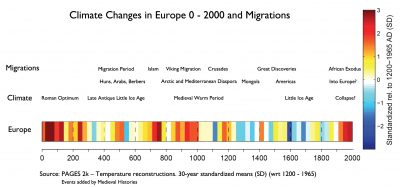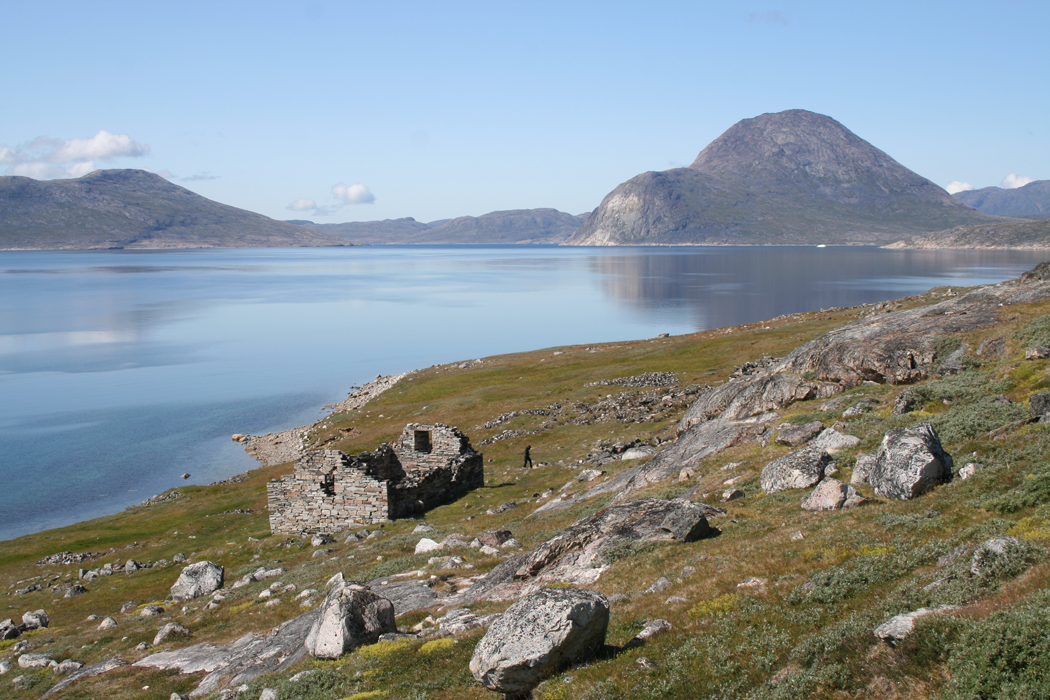The medieval warm period (AD 725 – 1025) was characterised by little solar activity and few volcanic eruptions. This resulted in climate stability and subsequently economic and demographic growth
 Historical climatology has for a long time been well-versed in taking climatic events into account when trying to grasp the history of specific periods. Thus the barbarian migrations in the 5th and 6th centuries are often linked with the distinct climatic cooling, which climatic history has documented.
Historical climatology has for a long time been well-versed in taking climatic events into account when trying to grasp the history of specific periods. Thus the barbarian migrations in the 5th and 6th centuries are often linked with the distinct climatic cooling, which climatic history has documented.
However, what impact did the relatively warm period in the 8th to 10th centuries have (more specifically AD 725 – 1025)? And more specifically: what were the characteristics?
In a recent article, a group of scientists have explored this period and found that the atmosphere had minimal contamination from explosive eruptions; at the same time there was no marked variance in solar irradiance in the period. In short the period must be characterised by its very low level of “natural” (non-anthropogenic) forcing events. This relative quiet period was brought to an end by a series of volcanic eruptions from AD 1108 and onwards, which heralded nearly 700 years of a much less staid climate.
The authors suggest that the period might be named the Medieval Quiet Period.
From a historical point of view it is interesting to note that the period seems to correspond quite well with a remarkable colonization process characterised by widespread land clearances, agricultural expansion and flourishing of cities and trade. Underlying these events a marked demographic growth took place. At the same time groups of people began colonizing regions beyond the frontiers – the Arctic as well as the Mediterranean and the Middle East.
It seems as if the Medieval Quiet Period created a potential for economic security and growth, which in time was channelled into migratory movements out of Europe.
SOURCE:
The Medieval Quiet Period
By Raymond S. Bradley, Heinz Wanner and Henry F. Diaz
In: The Holocene 2016 (Early Puiblication on web: 22.01.2016)
FEATURED PHOTO:
Herjolfsnæs in Greenland is one of the outposts of the Viking Diaspora, which sought to colonize new land at the frontier of what was humanly possible. In the Medieval Warm Period even Greenland would be inhabited by farmers. © Christian Koch Madsen 2009
